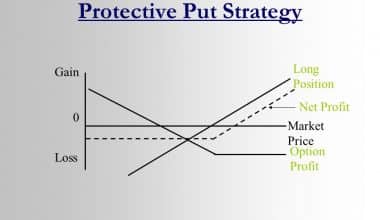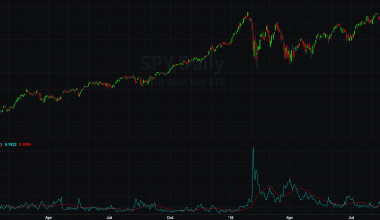Many organizations decide to restructure over time and employ a range of techniques to progress and differentiate themselves in the industry. Consider developing a product differentiation strategy if you want to boost profits without taking on large risks or cutting your prices. In this post, we’ll look at what product differentiation strategy is, the rule that goes along with it, how to create one, and the advantages of using one.
What Is Product Differentiation?
Product differentiation is the primary factor that differentiates a company’s products or services from the competition. Product differentiation that works results in brand loyalty and increased sales.
A product differentiation strategy is identifying and presenting a product’s or company’s unique qualities while emphasizing the differences between that product or company and its competitors. Product differentiation is synonymous with building a compelling value proposition to make a product or service appealing to a target market or audience.
Product differentiation, if successful, can create competitive advantages for the product’s seller and, eventually, build brand awareness. Products that are differentiated include the fastest high-speed Internet connection or the most fuel-efficient electric vehicle on the market.
Why is Product Differentiation Strategy Important?
The barrier to entry has been dramatically reduced in numerous businesses in recent years. As a result, these industries have seen significant growth in competing products. Differentiation is a fundamental requirement for a product’s survival in more competitive landscapes.
What does your product or service do/achieve/provide that your competitors do not? Product differentiation assists your business in answering this question and focusing on the distinct value that a product provides to its users. If no effort is made to differentiate products, they risk blending in with a sea of competitors and never gaining the market share required to stay in business.
Product Differentiation Strategy
Businesses benefit from combining various product differentiation techniques in the same way that buyers evaluate many criteria when making purchases. Which strategies are best for your company will be determined by the strengths of your product, the shortcomings of your competitors, and the values and preferences of your customers.
#1. Price
Price is both the most obvious and the most dangerous strategy. If you want to outperform your competitors at cheaper pricing, you’ll need to develop ways to be more efficient in the construction, maintenance, and distribution of your product.
You can succeed with a price plan by using less expensive materials or paying employees less. Other choices include eliminating features or providing less customer service to attain comparably cheap pricing.
#2. Quality
Customers are willing to spend a higher price for high-quality goods. For different products, quality might signify different things. If they cater to mountaineers, outdoor gear firms competing on quality may prioritize durability. They’ll create their apparel out of robust, tear-resistant materials. If they are targeting ultrarunners, quality will imply high-end, breathable, lightweight textiles.
#3. Service
Successful product differentiation can be as much about the interaction with your company as it is about the product itself. Service-oriented businesses try to wow their clients every time they connect with them.
In other ways, businesses might outperform their competitors with their services.
Instead of an impersonal, automated customer care system, they can have a friendly, qualified human present to answer inquiries and handle problems. Alternatively, they can make it simple to return a product that was not what the buyer expected without the effort of generating a return label and the expense of obtaining postage.
#4. Branding
The people in your ads, the language in your ad content, and the colors and style of your product should all reflect the values and personalities of your customers. Brand loyalty is achieved by matching your branding to the values of your target audience.
#5. Functionality
The most recent and distinctive features might provide your goods an advantage over the competition. To stay ahead of the curve, you must be willing to pay high salaries for expertise and supply those individuals with a substantial research and development budget. Look no further than Samsung and Apple smartphones’ ever-increasing competition for higher-resolution lenses and larger memory banks to discover how quickly you’ll need to develop in competitive businesses.
#6. Ease of use
Businesses can sometimes distinguish their products by zigging where others in the industry zag. Adobe Photoshop is packed with features, but it’s too much for someone who only wants to add some saturation to their selfies. Your company may stand out by providing elegant, user-friendly product designs and enough functionalities to perform all your clients want but nothing more.
#7. Audience
It’s tempting to market your products to the biggest potential audience to increase the number of people who wish to buy from your company. However, as an effective product differentiation strategy, it may make more sense to target a specialized customer that your competitors are overlooking.
Product Differentiation Rule
Product differentiation is a marketing strategy that involves creating a unique product or service that stands out from competitors. The product differentiation rule states that a business must differentiate its products or services from those of its competitors to succeed in the market. This means that businesses must identify and promote the unique features and benefits of their products or services to attract customers.
Businesses must identify their distinct value offer and effectively express it to customers. Businesses may attract clients, establish brand loyalty, and eventually prosper in the market by differentiating their products or services.
Advantages of a Product Differentiation Strategy
A product differentiation strategy has various advantages that might help you carve out a distinct niche in your industry. Here are some of the advantages of developing a product differentiation strategy:
#1. Less price competition
A product differentiation strategy enables a corporation to compete in the market on grounds other than cheaper costs. A candy manufacturer, for example, may differentiate itself by increasing the taste or utilizing healthier ingredients. Although its competitors sell cheaper candy, they cannot match the taste that people expect from that particular candy firm.
#2. One-of-a-kind product
A product differentiation strategy has the advantage of capitalizing on a product’s distinct characteristics. Your organization may create a list of features that its products have that your competitors do not. These features will distinguish your products, and you may communicate them effectively through marketing and advertising.
#3. Increased profit margins
When products are differentiated and transformed into higher-quality products, the opportunity for higher profit margins increases. For example, if your target market is ready to pay a higher price for superior quality or value, you may be able to make more income with fewer sales.
#4. Brand loyalty among consumers
If a company maintains the perceived quality of its products, it can create brand loyalty in customers. For example, if a sports figure promotes your brand, it will most likely raise brand loyalty because it increases the value of your brand.
#5. No perceived substitutes
An effective differentiation strategy may present the concept that there is no other product on the market to substitute it with. Even if equivalent products are available, a company may obtain a competitive advantage in the market since buyers will not be willing to replace your product with another. Companies attempt to distinguish themselves by offering consumers distinctive items that are frequently revolutionized.
How to Create a Product Differentiation Strategy
Businesses that want to have a broad or concentrated product differentiation strategy must create or design exceptionally unique or distinctive products or services that add value to the consumer. There are various approaches for a corporation to create a differentiation-based competitive advantage for a single product or the entire company. Here are some steps to create a product differentiation strategy:
#1. Decide what you want to be known for
You must be aware of your level of knowledge in your field. You’ll need to assess what’s important to you and your company, as well as the areas where your company excels. You will be able to give a narrow differentiation for your customers this way. Make a list of your overall brand’s and specific products’ strengths and flaws.
#2. Research your intended audience.
The study will assist you in aligning your company’s services with the demands and needs of current and prospective customers. This will also help you choose differentiators that will make your knowledge more appealing. For example, you may opt to send a survey to customers who buy your products or utilize your services to obtain data on what they are looking for.
#3. Create differentiators
This phase is necessary so that you can identify what distinguishes your brand or products. Each differentiator may be wide at first, so write them down and then create smaller subsections that focus on them.
#4. Share your story
When you explain your company’s unique story, it may help with differentiation because your competitors are unlikely to have a tale like yours. Evaluate your goal, vision, and values, and you’ll be able to craft an overarching story about what distinguishes you, converting your target audience into consumers.
#5. Develop a brand image
Implement your strategy and create a brand image by improving quality. To attract new clients and customers within your target audience, try to be creative and rebrand if necessary.
Example of a Product Differentiation Strategy
Product differentiation is important for both large corporations and garage-based small firms. Maintaining a competitive advantage can be critical for the most recognized companies. Small businesses, on the other hand, have demonstrated that with adequate product uniqueness, they can grab market share from larger corporations.
#1. Chick-fil-A
Competitive landscape: Quick-service restaurants are a $322 billion sector where low costs, great convenience, and reliable food are basic table stakes. Chick-fil-A is the third largest brand in the space because it excels at all three while making customers feel unique.
Product differentiation strategy: Chick-fil-A is an expert in customer service. For the past eight years, they have led the American Consumer Satisfaction Index. The chain accomplished this achievement by asking employees to say “my pleasure,” a novel phrase contrasted to the customary “you’re welcome.” That attention to detail, though, begins at the top. The organization enables franchisees to open only one store at a time, and each owner receives comprehensive training.
#2. Apple
Competitive landscape: Apple is a technology pioneer known for reinventing entire product categories such as the iPhone and portable music player. However, when competitors follow in their footsteps or outpace them in certain areas, Apple continues to be the best-of-breed among brand-loyal fans.
Product differentiation approach: Through its branding differentiation strategy, Apple has continually carved out a niche as a hip brand for creative people. The corporation has stressed clean, simple designs that make customers happy even before they hold the latest iPhone or MacBook.
#3. Hyperlite Mountain Gear
Competitive landscape: Companies such as North Face, Mountain Hardwear, and Patagonia lead the $7.1 billion outdoor clothing business. These businesses hope to appeal to all types of outdoor enthusiasts.
Product differentiation strategy: To avoid frightening away casual outdoor enthusiasts in their audience, many of the outdoor gear industry’s major competitors hedge their bets with materials and costs. This hesitation allows manufacturers like Hyperlite Mountain Gear to gain market share at the upper end of the market, where performance outweighs all other factors, including price. It’s a small market, but Hyperlite has courted these customers with inventive designs, luxurious fabrics, and word-of-mouth marketing.
What Is a Simple Example of Differentiation?
A simple example of differentiation is a coffee shop that offers a unique blend of coffee that no other coffee shop in the area offers. By offering a unique blend, the coffee shop can differentiate itself from competitors and attract customers who are looking for something different.
Another example could be a restaurant that offers a unique signature dish that is not available at any other restaurant. This can help the restaurant stand out from competitors and attract customers who are looking for a unique dining experience.
What Is the Purpose of Product Differentiation?
The purpose of product differentiation is to create a unique product or service that stands out from competitors. By differentiating their products or services, businesses can attract customers, build brand loyalty, and ultimately succeed in the market.
What Are the Types of Differentiation Strategies?
There are several types of differentiation strategies that businesses can use to stand out from their competitors. Here are some examples:
- Product Features
- Product Quality
- Price
- Branding
- Customer experience
- Innovation
What Is Coca Cola Product Differentiation Strategy?
Coca-Cola’s product differentiation strategy is based on the brand’s unique taste, packaging, and marketing. Here are some examples:
- Taste
- Packaging
- Marketing
- Product range
Coca-Cola’s product differentiation strategy is based on its unique taste, packaging, marketing, and product range. By offering a unique value proposition, Coca-Cola has been able to build brand loyalty and maintain a leading position in the soft drink market.
What Is an Example of Differentiated Marketing?
Differentiated marketing is a marketing strategy that involves targeting different customer segments with different marketing messages and product offerings. Here is an example of differentiated marketing:
A car company may differentiate its marketing efforts based on different customer segments. For example, the company may target families with a minivan that emphasizes safety features and spaciousness, while targeting young professionals with a sports car that emphasizes speed and style. The company may also target environmentally conscious consumers with a hybrid car that emphasizes fuel efficiency and sustainability.
By tailoring its marketing messages and product offerings to different customer segments, the car company can better meet the needs and preferences of its target audience and increase its chances of success in the market. Differentiated marketing can help businesses to connect with customers on a more personal level and build brand loyalty among different customer segments.
Conclusion
Product differentiation is a strategy used by products and brands to gain market share based on consumer preferences. Customers buy products for a variety of reasons, including price, brand image, quality or durability, flavor, color, or a fad.
A product will have a competitive edge and achieve market share if it can differentiate itself from its competitors in some unique way and appeal to consumers. As a result, product differentiation allows market forces to perform their job and keep consumer costs low.
- Differentiation Strategy: Best 2023 Practices For Business (+Free Tips)
- How to gain competitive advantage
- Naming Photography Business: Best Complete 2023 Guide & Creative Ideas
- Value Chain Analysis: Steps to value Chain Analysis
- COMPETITOR WEBSITE ANALYSIS: Top 10+ Web Analytic Free Tools in 2023
- WEBSITE REVIEWS: 10 Sites Where You Can Find Online Reviews for Businesses






